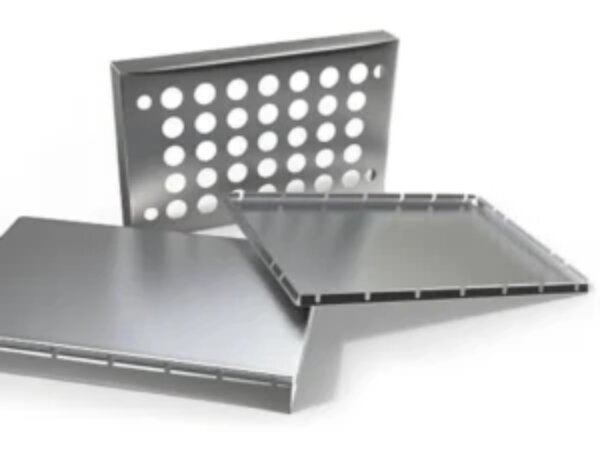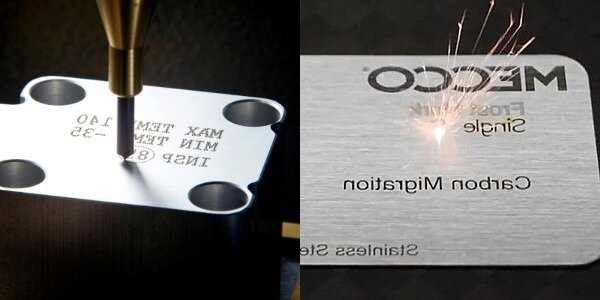L'or est l'un des métaux les plus populaires au monde. Il est utilisé dans la bijouterie, l'électronique et même l'équipement spatial. Cependant, certains s'inquiètent encore de savoir s'il peut rouiller ou se corroder. Cette crainte est logique : personne ne veut d'une bague ou d'un connecteur en or qui deviendrait vert ou se détériorerait. Ce billet clarifie le comportement de l'or dans le temps. Vous apprendrez pourquoi il reste brillant, ce qui l'affecte et à quel moment il peut commencer à présenter des changements.
La résistance de l'or à la rouille en fait un matériau unique. Mais ce n'est pas tout : voyons ce qui rend l'or si stable et quand il peut montrer des signes d'usure.
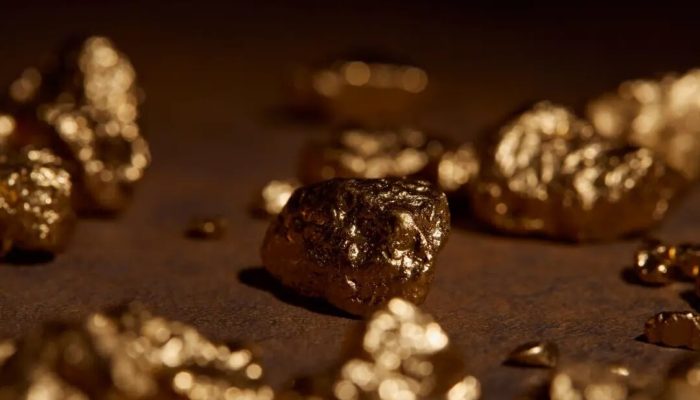
Qu'est-ce que l'or ?
L'or est un métal jaune et tendre que l'on trouve dans la terre. Il est connu pour sa couleur, son poids et sa brillance. L'or est l'un des rares métaux à apparaître brillant et jaune sans nécessiter de traitement de surface. Il est utilisé depuis des milliers d'années pour fabriquer des pièces de monnaie, des bijoux et des objets d'art.
L'or est également très dense. Il est facile à façonner, à étirer et à presser sans se fissurer. C'est pourquoi les fabricants peuvent le façonner en feuilles minces ou en fils pour des travaux complexes.
L'or provient de sources naturelles. Comparé à d'autres métaux, il n'a pas besoin d'être beaucoup raffiné. Il reste également pur sous de nombreuses formes, ce qui le rend facile à recycler et à réutiliser.
Caractéristiques chimiques qui rendent l'or unique
L'or ne réagit pas à l'oxygène. Il ne se mélange pas facilement avec les acides ou l'eau. C'est pourquoi l'or résiste même à l'air libre ou dans des environnements salés. Il fait partie du groupe des "métaux nobles". Ces métaux sont connus pour leur stabilité dans le temps.
La surface de l'or ne forme pas de rouille ni de couches d'oxyde. Les autres métaux forment un film qui dégrade leur surface. L'or reste propre et brillant. L'or n'attire pas non plus facilement les électrons. C'est pourquoi il convient à l'électronique, où des signaux stables sont nécessaires.
L'or rouille-t-il ?
Non, l'or ne rouille pas. L'or est un métal noble. Cela signifie qu'il ne réagit pas à l'air, à l'eau et à la plupart des produits chimiques. Ainsi, l'or pur ne forme pas de rouille, de corrosion ou de ternissement dans des conditions normales. Toutefois, les alliages d'or peuvent se comporter différemment en fonction des métaux avec lesquels ils sont mélangés.
Position de l'or dans la série des réactivités
L'or se situe au bas de la liste des métaux réactifs. Cette liste classe les métaux en fonction de leur réactivité avec d'autres substances, telles que l'oxygène ou l'eau.
Les métaux situés au sommet du tableau périodique, comme le sodium ou le fer, réagissent rapidement. Ils rouillent, se corrodent ou ternissent dans des conditions normales. L'or, en revanche, reste stable. Il ne se lie pas à l'oxygène, même avec le temps.
En raison de sa faible réactivité, l'or ne forme pas de rouille. La rouille se forme lorsqu'un métal réagit avec l'oxygène et l'eau. Comme l'or résiste à ces deux éléments, la rouille ne se forme pas.
Nature inerte de l'or pur
L'or est un métal inerte. Cela signifie qu'il ne réagit pas avec la plupart des éléments qui l'entourent. L'or pur ne change pas de couleur, ne se fissure pas et ne s'écaille pas, même lorsqu'il est exposé à des produits chimiques.
Cette stabilité explique pourquoi l'or est souvent utilisé dans les outils de laboratoire, les appareils médicaux et l'électronique. Il reste propre et conserve sa structure, même après une utilisation prolongée.
La nature inerte de l'or signifie également qu'il n'a pas besoin de protection. les revêtements ou les finitions. Il reste brillant tout seul.
Comportement de l'or dans l'air et dans l'eau
L'or pur reste inchangé dans l'air et dans l'eau. Il ne forme pas d'oxydes comme le cuivre et ne rouille pas comme le fer. Vous pouvez laisser de l'or à l'air libre ou dans l'eau pendant des années sans qu'il soit endommagé.
Même dans l'eau salée, l'or reste inchangé. C'est pourquoi il est utilisé dans les pièces marines et les environnements à forte humidité.
Cela fait de l'or l'un des métaux les plus fiables pour une utilisation à long terme dans des produits exposés à l'air et à l'humidité.
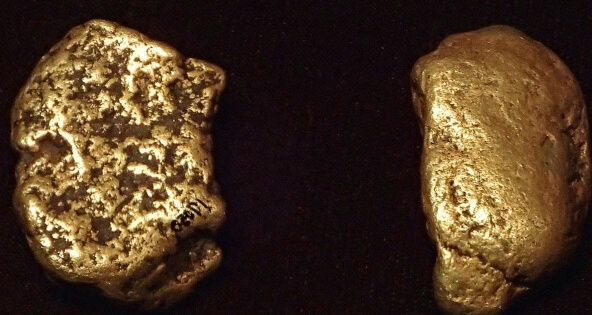
L'or se corrode-t-il ou se ternit-il ?
L'or est réputé pour conserver son aspect et sa solidité, même après un usage prolongé. Pour comprendre pourquoi il ne se corrode pas et ne se ternit pas comme d'autres métaux, il convient d'analyser clairement la situation.
Comprendre la corrosion des métaux nobles
La corrosion se produit lorsqu'un métal se décompose après avoir réagi avec son environnement, généralement avec de l'oxygène, des acides ou des sels. La plupart des métaux forment une couche d'oxyde ou d'autres composés à la surface. Cette couche affaiblit le métal au fil du temps.
Mais les métaux nobles comme l'or, le platine et l'argent résistent à la corrosion. Ces métaux ne réagissent pas facilement. L'or, en particulier, est très stable. Il reste inchangé dans l'air, l'eau et de nombreux produits chimiques.
L'or pur ne se corrode donc pas. Il ne perd pas sa surface et ne s'écaille pas comme le fer.
Pourquoi l'or ne ternit pas comme l'argent ou le cuivre?
La ternissure est une couche superficielle qui se forme lorsque les métaux réagissent avec le soufre ou l'oxygène de l'air. L'argent devient sombre à cause du soufre. Le cuivre devient vert à cause de l'oxydation.
L'or ne réagit pas de cette manière. Il ne forme pas de sulfures ou d'oxydes dans des conditions normales. C'est pourquoi les bijoux en or restent brillants sans être polis.
Contrairement à l'argent ou au cuivre, l'or ne forme pas de pellicule qui cache sa couleur. Même après des années d'usure, l'or pur conserve son aspect brillant.
Facteurs environnementaux pouvant affecter l'aspect de la surface
L'or pur est stable, mais ce que l'on voit à sa surface peut parfois changer.
L'or utilisé dans les bijoux ou les produits est souvent allié à d'autres métaux, tels que le cuivre ou l'argent. Ces métaux ajoutés peuvent ternir. Ainsi, un alliage d'or peut s'assombrir ou se tacher avec le temps, mais ce n'est pas l'or lui-même qui en est la cause.
En outre, la saleté, l'huile ou les produits chimiques présents dans l'air peuvent s'accumuler sur l'or. Cela ne signifie pas que l'or est corrodé. Il a simplement besoin d'être nettoyé.
Dans de rares environnements industriels où règnent des acides forts ou des températures élevées, même l'or peut se ternir légèrement. Mais il ne rouille pas et ne se décompose pas. La surface reste solide et tout changement n'est généralement que cosmétique.
Signes d'usure des bijoux en or
Les bijoux en or résistent bien, mais ils sont toujours exposés au frottement, au contact et à la saleté au quotidien. De nombreuses personnes confondent l'usure normale et les dommages réels. Voyons ce qui se passe.
Ternissement de la surface ou rouille véritable
L'or ne rouille pas. Toutefois, avec le temps, il peut perdre un peu de sa brillance. Il ne s'agit pas de corrosion. Il s'agit simplement d'une couche de saleté, d'huile ou de petites rayures qui empêchent la lumière de se refléter.
Un simple coup de polish peut lui redonner de l'éclat. Il n'y a pas de dommages profonds. Contrairement à la rouille, le ternissement de l'or n'affaiblit pas le métal.
Rayures, décoloration et résidus
L'or, en particulier les alliages à faible teneur en carats, peut se rayer en cas d'utilisation régulière. Il s'agit d'un phénomène normal pour les métaux plus tendres.
Une décoloration peut se produire si l'alliage contient du cuivre ou de l'argent. Ces métaux réagissent avec la sueur, l'air ou les produits ménagers. Vous pouvez remarquer des marques vertes ou noires sur la peau ou le bijou.
Les résidus peuvent provenir de lotions, de savon ou de poussière. Ils adhèrent à la surface sans endommager l'or. Un nettoyant doux permet généralement de les éliminer.
Idées fausses sur la détérioration des bijoux en or
De nombreuses personnes pensent que l'or rouille lorsqu'il prend une teinte foncée ou qu'il est rugueux. Dans la plupart des cas, ce sont les autres métaux de l'alliage qui réagissent, et non l'or lui-même.
Certains pensent également que l'or se détériore lorsqu'il se raye ou se plie. L'or pur est mou, il est donc normal qu'il présente des marques mineures. C'est pourquoi des métaux plus durs sont ajoutés pour équilibrer la douceur et la résistance.
S'ils sont bien entretenus, les bijoux en or peuvent durer des dizaines d'années sans être gravement endommagés. Ce qui semble être de la corrosion est souvent superficiel et facile à réparer.
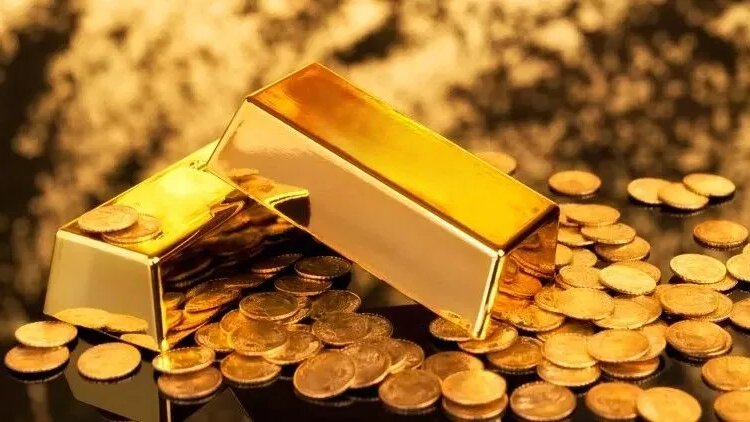
Comment vérifier si votre or est pur ?
Savoir si votre or est vrai et pur vous permet d'éviter des problèmes tels que la décoloration ou la perte de valeur. Voici quelques moyens simples de vérifier la qualité de l'or.
Test de l'aimant et test de l'acide
Test d'aimant: L'or n'est pas magnétique. Si votre objet colle à un aimant, il contient probablement du fer ou un autre métal commun. C'est un moyen rapide de repérer les contrefaçons.
Acid Test: Les bijoutiers utilisent souvent de l'acide pour tester la pureté de l'or. Une goutte d'acide est placée sur la surface. La réaction - ou l'absence de réaction - indique la quantité d'or présente. L'or véritable ne réagit pas, tandis que les métaux de moindre qualité se décolorent ou se dissolvent légèrement.
Ces tests sont faciles, mais les kits d'acide doivent être manipulés avec précaution.
Système de Karat et marques
La pureté de l'or se mesure en karats. Plus le nombre est élevé, plus l'or contient de l'or :
- 24K = or pur
- 18K = or 75%
- 14K = 58,5% or
- 10K = 41,7% or
La plupart des articles en or portent un marquage, tel que "18K" ou "750" (qui indique 75%). Ce marquage se trouve à l'intérieur des bagues ou des fermoirs de chaînes. Les contrefaçons peuvent ne pas comporter de marquage ou en utiliser de faux.
Méthodes d'évaluation professionnelle
Pour un contrôle plus approfondi, un bijoutier peut effectuer des tests avancés :
- Fluorescence des rayons X (XRF): Vérifie la teneur en or sans endommager la pièce.
- Testeurs électroniques: Utiliser des sondes pour mesurer la pureté de l'or.
Ces méthodes sont rapides et plus précises que les tests effectués à domicile. Elles permettent également d'identifier l'or stratifié ou plaqué, qui peut sembler authentique mais ne contenir que très peu d'or réel.
Prévenir les dommages aux objets en or
L'or dure longtemps, mais il a besoin d'être entretenu. Les habitudes quotidiennes et les mauvais nettoyants peuvent l'user. Voici comment conserver l'aspect neuf de l'or.
Meilleures pratiques de nettoyage et de stockage
Nettoyez l'or avec du savon doux et de l'eau chaude. Utilisez un chiffon doux ou une brosse pour enlever la saleté. Évitez de frotter trop fort.
Séchez bien les pièces avant de les ranger. Conservez l'or dans une pochette souple ou une boîte doublée de tissu pour éviter les rayures. Conservez les pièces séparément pour éviter qu'elles ne frottent les unes contre les autres.
N'utilisez pas de dentifrice, de bicarbonate de soude ou de chiffons rugueux, car ils risquent de rayer la surface.
Éviter le contact avec des produits chimiques agressifs
Tenez l'or à l'écart du chlore, de l'eau de Javel et des produits de nettoyage. Ceux-ci peuvent endommager les alliages ou ternir la surface.
Même les produits quotidiens tels que les parfums, les lotions et les laques peuvent s'accumuler sur l'or. Appliquez ces produits avant de porter vos bijoux, et non après.
Dans les piscines ou les jacuzzis, retirez vos bijoux. Le chlore peut affecter le mélange des métaux et affaiblir certains alliages d'or.
Quand retirer les bijoux en or?
Retirez les objets en or lors de travaux lourds, de séances de gymnastique ou de tâches extérieures. Cela permet d'éviter les bosses, les déformations ou les rayures profondes. Enlevez également l'or avant de vous coucher pour éviter tout dommage accidentel.
Si vous faites le ménage, travaillez avec des outils ou nagez, il est préférable d'enlever vos bijoux en or pour protéger leur finition et leur forme.
L'or dans les environnements difficiles
L'or résiste bien, même dans des conditions extrêmes. C'est pourquoi il est utilisé dans des secteurs où la plupart des métaux échouent. Voyons comment il se comporte dans ces conditions.
L'or en milieu marin et industriel
L'eau salée, les produits chimiques et l'humidité élevée peuvent entraîner la dégradation de nombreux métaux. L'or, lui, reste stable.
En milieu marin, l'or résiste au sel et à l'humidité. Il ne se corrode pas comme l'acier ou l'aluminium. C'est pourquoi il est parfois utilisé dans les connecteurs, les revêtements ou les joints d'étanchéité de pièces de grande valeur.
Dans les environnements industriels, l'or peut supporter les acides, les gaz et les fortes chaleurs. Il ne change pas de forme et ne perd pas facilement sa résistance en surface. Il est utilisé dans les outils ou les revêtements qui doivent résister à des contraintes prolongées.
Résistance à la corrosion dans l'électronique
L'électronique a besoin de métaux qui ne se détériorent pas avec le temps. L'or est idéal car il résiste à l'oxydation, ce qui permet de conserver la clarté des signaux.
Il est utilisé sur les points de contact, les circuits imprimés et les connecteurs. Même sous l'effet de la chaleur, de l'humidité et d'une utilisation répétée, l'or reste propre et conducteur.
Cette fiabilité permet d'éviter les pertes de signal, les courts-circuits et les défaillances de produits, en particulier dans les systèmes aérospatiaux, médicaux et de défense.
Longévité des objets plaqués or
Les objets plaqués or sont recouverts d'une fine couche d'or appliquée sur un autre métal, comme le cuivre ou le laiton. Bien qu'ils semblent être de l'or massif, ils s'usent plus rapidement.
Avec le temps, le métal de base peut transparaître. Si la couche d'or est fine, elle peut s'effacer lors d'un usage quotidien. L'exposition à la sueur, à l'eau ou au frottement accélère ce processus.
Les articles plaqués doivent être portés occasionnellement. Ils doivent être nettoyés en douceur et conservés pour ralentir l'usure et préserver leur apparence plus longtemps.
Conclusion
L'or ne rouille pas. L'or pur est un métal noble qui résiste à la corrosion, au ternissement et à l'oxydation. Il reste stable dans l'air, l'eau et même les environnements difficiles. Toutefois, les alliages d'or ou les objets plaqués or peuvent présenter une usure ou des changements de surface au fil du temps en raison de la présence d'autres métaux. Avec un entretien approprié, l'or conserve son éclat et sa durabilité pendant des années.
Vous recherchez des pièces métalliques qui résistent à la rouille et durent longtemps ? Nous proposons des solutions personnalisées utilisant des matériaux de haute performance, notamment l'or et d'autres métaux résistants à la corrosion. Contactez-nous pour obtenir un devis rapide ou des conseils d'experts.
Hey, je suis Kevin Lee

Au cours des dix dernières années, j'ai été immergé dans diverses formes de fabrication de tôles, partageant ici des idées intéressantes tirées de mes expériences dans divers ateliers.
Prendre contact

Kevin Lee
J'ai plus de dix ans d'expérience professionnelle dans la fabrication de tôles, avec une spécialisation dans la découpe au laser, le pliage, le soudage et les techniques de traitement de surface. En tant que directeur technique chez Shengen, je m'engage à résoudre des problèmes de fabrication complexes et à favoriser l'innovation et la qualité dans chaque projet.



